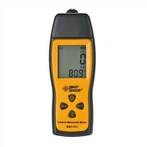Why do I need rosin in my soldering iron? How to use rosin in soldering iron
Rosin is the most commonly used flux, it is neutral and will not corrode circuit components and soldering iron tips. It allows the solder droplets to stick to the circuit board quickly when soldering, and the rest just sits and waits for the droplets to cool down, so that the quality of the soldered product is very guaranteed.
First of all, in the case of liquid tin droplets, the solder joints are very full, because the liquid tin droplets are not very fluid, basically will stay next to the electronic feet, when it solidifies there will not be much change.
Rosin's function also includes the ability to clear oxides from metal surfaces and assist in the diffusion of tin.
In terms of solder joints, it can play a role in connecting the parts, do not do mechanical force support; coordinated heat dissipation; and electrical conduction, so, from these aspects, rosin for the ordinary requirements of the welding is very helpful.
The main role is to help soldering, the use is: 1. With a hot soldering iron dipped in solder 2. With a hot soldering iron dipped in rosin 3. With a rosin and soldering iron soldering.
The biggest benefit of rosin is: tin the wires, because if you don't use rosin it's hard to tin the wires, heat up the soldering iron first, then put the soldering iron in rosin, take out the soldering iron, dip the soldering iron in tin, put it in rosin again, and then put the wires that are to be tinned in, and then the tinning will be much easier. The other role is to put the newly purchased soldering iron into the rosin, and then on the tin, the entire head of the soldering iron are full of tin, and then after the use of the soldering iron are full of tin, until the next time to use a soldering iron will not be oxidized because of the head of the soldering iron is not good to use.
Rosin is used as a flux in soldering, and plays the role of fluxing.
Theoretically speaking, the melting point of the flux is lower than the solder, from the specific gravity, viscosity, surface tension are smaller than the solder, so in the welding, the flux first melted, and soon flow immersion, covering the surface of the solder, to play the role of the air to prevent the oxidation of the metal surface and can be welded at high temperatures and the surface of the solder and the metal to be welded oxidized film reaction, so that the melting, and to restore the pure surface of the metal. The right solder helps to weld a satisfactory shape of the solder joints, and to maintain the surface luster of the solder joints.
If the board is newly printed, apply a layer of rosin on the surface of copper foil before soldering. If the circuit board has been made, it can be soldered directly. In fact, the use of rosin depends on personal habits, some people are every soldering a component, will be the soldering iron tip in the rosin dip; I am every time when the soldering iron tip is oxidized, not very convenient to use, only when it will be on top of the dip some rosin. The rosin is easy to use, just open the rosin box and dip the tip of the energized soldering iron on it.
If the soldering is used when the solid core of the solder, add some rosin is necessary; if the use of rosin tin solder wire (wire core wrapped with flux), can not use rosin.
As the metal surface in contact with air will generate a layer of oxide film, the higher the temperature, the more powerful oxidation. This layer of oxide film prevents liquid solder on the wetting effect of the metal, as if the oil on the glass will make the water can not be wet. Solder is used to remove the oxide film of a special material, also known as flux. Flux has three major roles: 1. In addition to the oxide film. Substance is the substance in the flux reduction reaction, thereby removing the oxide film, the reaction product into a suspended slag, floating on the surface of the solder. 2. to prevent oxidation. After melting, it floats on the surface of the solder, forming an isolation layer, thus preventing the oxidation of the solder surface. 3. Reduce surface tension, increase the mobility of the solder, which helps the solder to wet the solder.






